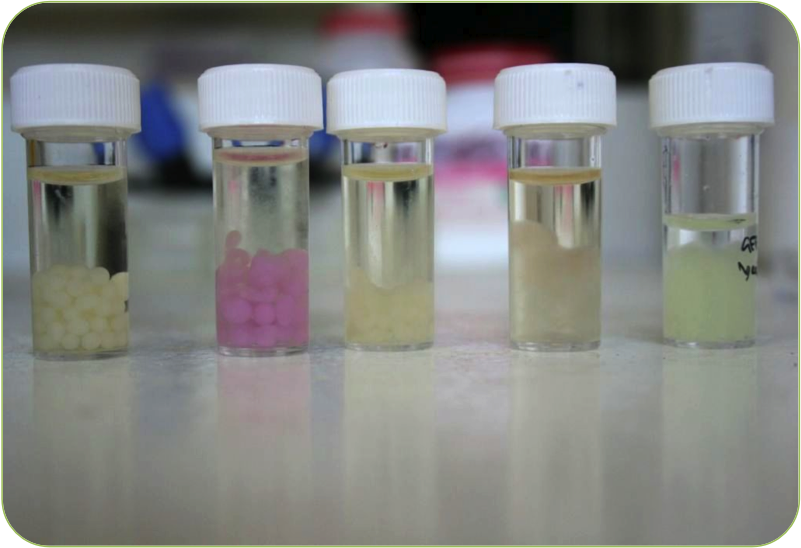Team:BCCS-Bristol/Wetlab/Beads
From 2010.igem.org
iGEM 2010
Beads
One of the factors that differentiate us from other teams is our use of technology to facilitate using our bacteria safely and more effectively in real life situations. More specifically; we encapsulated our bacteria in a non-toxic gel substances, forming beads of highly concentrated bacteria.
Why did we do this?
Initial soil visibility experiments (see here) raised the major problem that high levels of cell death when E. coli were spread freely in the soil resulted in very low signals. This isn't surprising, given lab-grade E. coli are deliberately synthesised such that they can't survive outside of very specific conditions, and are easily outcompeted by naturally occuring soil bacteria.
Whilst developed to solve this problem, our beads have a number of beneficial features:
- Beads provide a protective environment, reducing cell death.
- Large concentrations of cells in a small area ensure high, easily detectable signals.
- Nutrients can be added to beads, further improving bacteria survival.
- Bacteria are kept seperate from the environment, reducing public safety fears.
- Increased access to Nitrate.
More Information
We hope our work on bacterial encapsulation will prove useful to teams in the future - as encapsulation has a number of applications beyond our soil sensor - so have provided below information on the material we chose to use, and the exact procedure for making beads. Here you can also find links to experiments analysing the performance of beads containing our new biobrick, and a gallery of bead images:
 "
"
